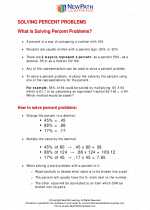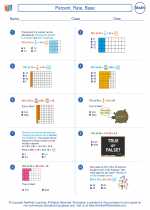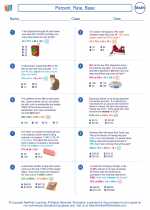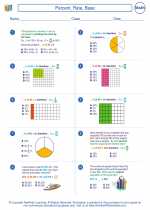Percent, Rate, Base -> trigonometric ratios
Trigonometric Ratios
Definition
Trigonometric ratios are the ratios of the sides of a right-angled triangle. The six trigonometric ratios are sine, cosine, tangent, cosecant, secant, and cotangent, denoted as sin, cos, tan, csc, sec, and cot respectively.
Basic Trigonometric Ratios
For a right-angled triangle with sides a, b, and hypotenuse c, and an angle θ:
- Sine (sin θ) = Opposite/Hypotenuse = a/c
- Cosine (cos θ) = Adjacent/Hypotenuse = b/c
- Tangent (tan θ) = Opposite/Adjacent = a/b
Reciprocal Trigonometric Ratios
The reciprocal trigonometric ratios are the reciprocals of the basic ratios:
Study Guide
To study trigonometric ratios, follow these steps:
- Understand the basic definitions and concepts of right-angled triangles and angles.
- Memorize the trigonometric ratios and their definitions.
- Practice solving problems involving trigonometric ratios, such as finding missing sides or angles in a right-angled triangle.
- Learn about the unit circle and how it relates to trigonometric ratios.
- Understand the application of trigonometric ratios in real-life situations, such as navigation, engineering, and physics.
Remember to practice regularly and seek help if you encounter difficulties in understanding any concept related to trigonometric ratios.
.◂Math Worksheets and Study Guides Sixth Grade. Percent, Rate, Base
Study Guide Percent, Rate, Base
Percent, Rate, Base  Worksheet/Answer key
Worksheet/Answer key Percent, Rate, Base
Percent, Rate, Base  Worksheet/Answer key
Worksheet/Answer key Percent, Rate, Base
Percent, Rate, Base  Worksheet/Answer key
Worksheet/Answer key Percent, Rate, Base
Percent, Rate, Base 

 Worksheet/Answer key
Worksheet/Answer key
 Worksheet/Answer key
Worksheet/Answer key
 Worksheet/Answer key
Worksheet/Answer key

The resources above cover the following skills:
Number and Operations (NCTM)
Understand numbers, ways of representing numbers, relationships among numbers, and number systems.
Work flexibly with fractions, decimals, and percents to solve problems.
Develop meaning for percents greater than 100 and less than 1.